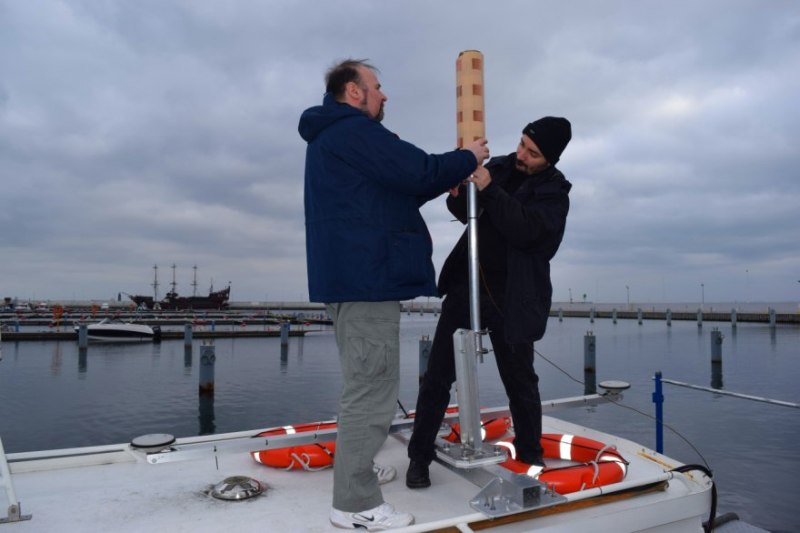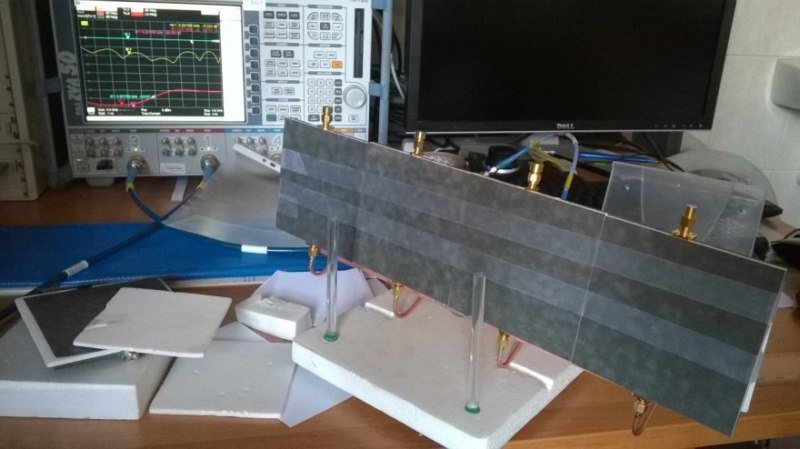SEMLA
Project objectives
The project’s objective is to achieve R&D results enabling implementation of ultra-light, low-profile planar (flat) and conformal antennas, which can operate with more than one polarity, and are suitable for use in numerous applications both onshore and offshore, particularly in harsh environmental conditions.
Preventing human and environmental hazards is highly dependent on early warning of their origin and potential expansions, immediately followed by appropriate actions to mitigate the consequences. This calls for proficient remote environmental surveillance equipment and associated communication systems, most notably realized by airborne radars and radars operating on strategically positioned fixed or mobile platforms, supported by appropriate telecommunication solutions to provide fast data exchange and timely alerts.
The overall goal of this project is to devise new inventive antennas and associated microwave microelectronics to facilitate accurate and resilient radar surveillance systems and robust broadband communications, particularly for use in harsh environments like polar regions and other remote and/or hardly accessible areas being extremely vulnerable to environmental hazards. The project priority is given to applied rather than basic research in order to accommodate requirements regarding human and environmental protection. Technologies developed in the project will thus be of generic character in order to be used in several appropriate applications, most notably being stationary and/or mobile radars, airborne radars, modern telecommunications and rescue systems.
Project particular topics
Modern Day Antennas for use in Arctic
Antennas enable radio system's contact with the outside world, and thus represent the most crucial elements regarding any radio (incl. radar) system capability. A poorly performing antenna deteriorates any radio system's performance, and may disable it completely.
These facts seem currently to be discarded, as antennas and other decisive radio sub-units have become assembly-line products, which comprise increasingly more entities being highly important to our everyday life; our electromagnetic environment thus becoming progressively dense with the proliferation of unintentional and intentional signals and interferences. Consequently ever more information and sophistication are required from radio systems, and the demands on antenna performance are steadily increasing.
Research carried out under the present project will draw on previous experience of the SEMLA team members and will set out new ambitious objectives for the research in the field of low-profile antennas with multiple polarization, digital signal processing (DSP) and microwave techniques.
A layer of salty snow/ice significantly changes the electrical properties of an antenna. This may at 'best' reduce the range of communication and/or quality of e.g. radar imaging or positioning by GPS/Galilelo/GNSS (GNSS: Global Navigation Satellite System) - and at worst lead to irreversible loss of data and outage of the radio connection. Under severe icing conditions the GPS receiver or radio link might stop working due to changes in the antenna properties.
Similar antenna systems are being addressed by the latest research carried out in military and space laboratories. being built of less expensive materials with the use of more cost-effective manufacturing methods, such antennas could also be highly beneficial to other applications. Currently such antennas are not in production in Europe, and the technologies being explored represents undoubtedly unique novelties, whence the results can be classified as a 'high-tech' innovations. Ultra-light antennas for rescue equipment and antennas for equipment making use of local renewable energy harvesting (e.g. antennas integrated with solar panels) are yet another field in which the project results can be applied - in addition to modern broadband communications in general, and particularly in harsh environmental conditions.
Innovative antennas and microwave circuits has ever since the start of their carriers been the highlight of scientific and research work of the project team members, both regarding the experienced and acknowledged scientists Dr. Pawel Kabacik and Mr. Fritz Bekkadal as well as the younger generation: Dr. Arkadiusz Byndas. Antennas developed by this research team are used for the most demanding space flights, such as international manned space missions involving astronauts’ activities in open space and transport by NASA space shuttles. Research under the project stems directly from contracts carried out for European and global institutions and space programmes.
Broadband radio links at sea
It has been proven, both through field tests and from maritime operators' feedback that currently available communication means are not working satisfactorily regarding a.o. safety and efficiency requirements pertaining to marine and maritime operations in the Arctic. Furthermore, a study performed for the European Space Agency (ESA) has predicted that a new system for digital communication in the High North is not likely to be available until about 2020. The 'MarCom and 'MarSafe' projects funded by the Norwegian Research Council with Wroclaw University of Technology (WRUT) as a partner, concluded that both navigation and communication systems are exposed to serious performance degradations at latitudes higher than about 70N:
- For communications the combination of low elevation angles, longer transit distance through the atmosphere, limited ground infrastructure and icing on antennas are leading to weaker signals, faster signal/information loss as well as larger delays.
- For navigation systems interference from the ionosphere, icing on antennas and limited access to GNSS differential correction and integrity information are the crucial issues.
The project provides major advancements to understanding technical approaches required by broadband radio systems to operate over sea waters.
MarCom: 'Maritime Communications-Broadband at sea' (https://sites.google.com/site/marcomcommunity/Home)
MarSafe North – 'Maritime safety in the High North' (http://www.sintef.no/marsafe)
Early polarimetric radar warning for natural environment protection
Only when using two antennas with two or more polarity options, along with advanced DSP, can modern radars achieve sensitivity and discrimination capacity sufficient to identify small sources and/or origins of environmental pollutants and other threats to society, which are not detectable by currently available radars. Without new antenna solutions can neither polarimetry nor the favorable opportunities offered by novel DSP be realized, which are prerequisites for achieving more capable environmental detection and monitoring systems. Radar observations will enable systematic condition assessment of the environment, and help in detecting the sources and processes leading to degradation of water and forestry resources.
Concerning early warning against pollutions caused by oil spills, stationary and/or mobile miniature, low-power radar installations utilized for local surveillance are in the focus of the project. Regarding the protection against environmental pollution of water and forestry resources the need for such advanced miniature radar systems is enormous, e.g. for the protection of inland water resources – lakes and rivers – particularly by permanently installed radars in the vicinity of discharge pipes of purification plants and other installations.
The project activities are projected to result in models of planar (flat) and conformal low-profile integrated antennas (including DSP modules), also intended for use in airborne radars - and thus facilitating even more efficient detection of pollutants floating on water surfaces and condition assessment of e.g. woods.
- Ultra-light multi-polarization antenna elements and associated microwave components of antenna feeding networks made in panels of composite materials
- Design and development of a multi-task processor system, radar aperture synthesis and implementation of signal processing methods in polarimetric radars
- Microwave antennas and circuits on elastic membranes stiffened with compressed gases
- Antenna elements and their microwave feeding circuits, integrated with solar cell panels
- Integration of components of a composite microwave antenna system and adaptation of its parameters for use on aircrafts and in marine applications
- WP1: Project management and dissemination of project results
- WP2: Multi-polarization antenna subsystems
- WP3: Airborne radar aperture synthesis and methods for polarimetric radars implementation
- WP4: New antennas integrated with solar cells for local energy harvesting
- WP5: Advanced antenna integrated microwave components and circuitry
- WP6: Planar and conformal multilayer antenna panels
- WP7: Novel radar surveillance antenna concepts for environmental monitoring
- Analysing the invented antenna concepts with and without ice, using typical parameter values for different types of ice, including saline ice. Based on these analyses appropriate modifications will be made, and antenna concepts most likely to be robust regarding influence of ice and snow recommended
- Introducing countermeasures against ice formation on antenna surfaces by investigating radome materials and thin films featuring minimum adhesion to water, ice and wet snow.
- Investigating polymers to find materials and surface treatments of antennas and radomes that protects the antenna satisfactory under harsh environmental conditions (e.g. in the Arctic) by ensuring poor adhesion of water, snow and ice
- Proposing methodology for developing solid matters being electrically equivalent to ice for laboratory tests at ambient temperatures
In order to successfully achieve the project objective we will focus the following issues in our methods of approach:
New antenna and radome concepts capable of mitigating icing problems will also be addressed, with the following major approaches:
Carefully selected concepts to be implemented in models and tested in laboratories, subsequently followed by field tests in a suitable location with Arctic conditions.

Fig. 1. Prepartions for sea trials of broadband radio communication at sea under SEMLA project.

Fig. 2. Front side of 27 dBi X-band antenna array for dual-polarized operation developed under SEMLA project.
